

Pantheon
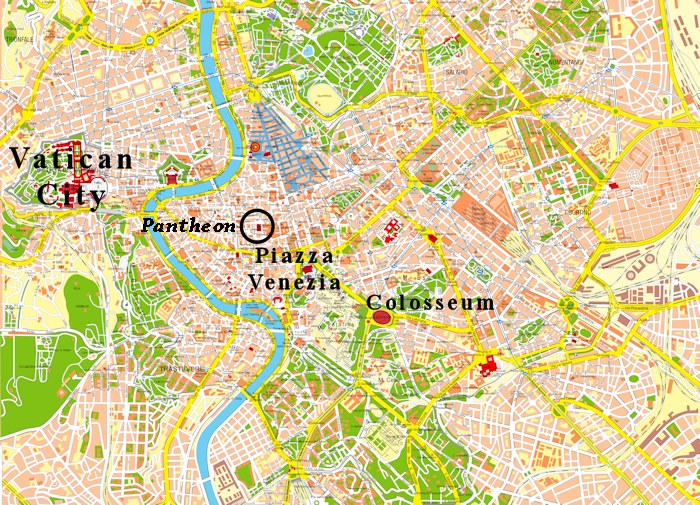
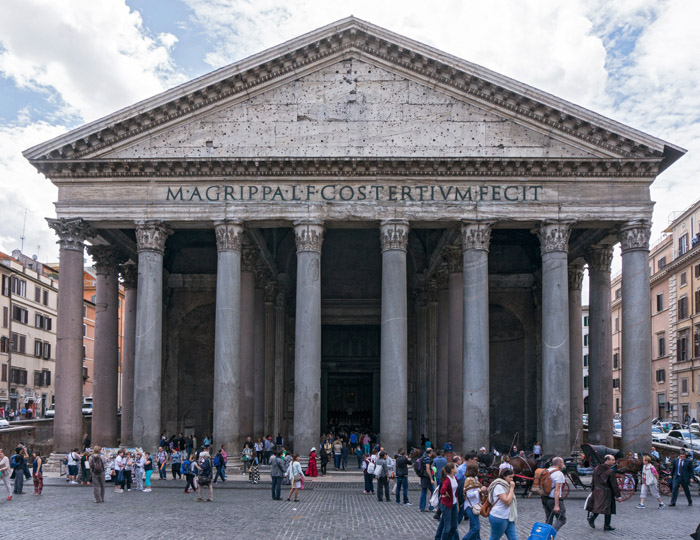
The Pantheon was first built by Marcus Agrippa, a good friend and key aid to Emperor Augustus, as a temple to all the gods (pantheon in Greek). It was rebuilt in 126 AD during his reign of emperor Hadrian (117 - 138). It is believed that Hadrian had a significant influence on the architecture of the rebuilt Pantheon.
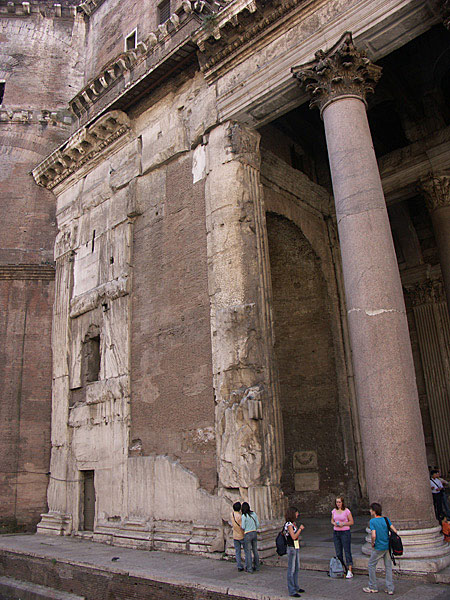
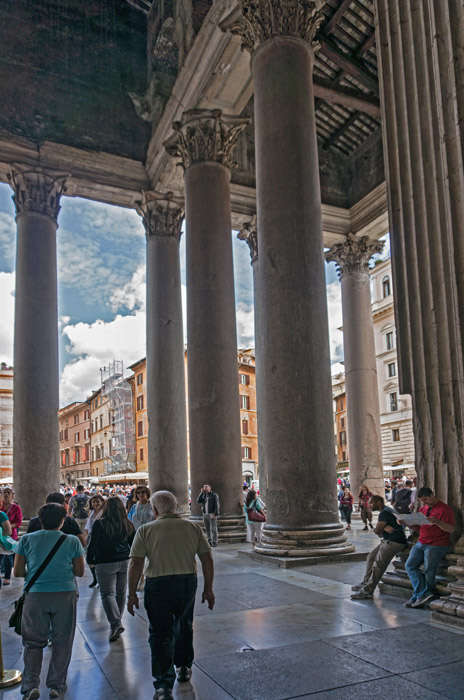
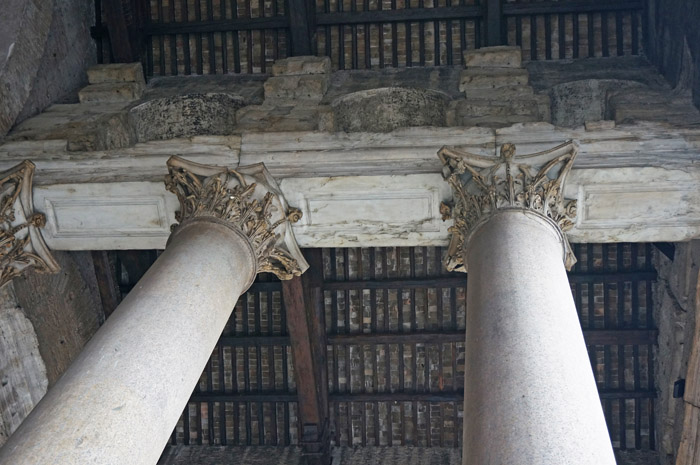
"The supreme example of Roman structural ingenuity - and its aesthetic apogee -
is the Pantheon. Built by the emperor Hadrian to replace and earlier
temple by Agrippa, the Pantheon still stands, virtually unchanged for almost
1,900 years. Its dome was the widest until the nineteenth century. ...
The design is a hybrid. Its pedimented porch and Corinthian columns are
Greek, while the soaring rotunda - unsuspected from the outside - is pure Roman.
This synthesis became the model for countless succeeding buildings, from St.
Peter's in the Renaissance to designs by Palladio and Thomas Jefferson.
Five thousand tons of concrete shape the dome, but the content of the concrete
varied to lighten the load as it ascended. Mixed with heavy basalt at the
bottom, the layers contained porous, lightweight pumice at the top. The
coffers, or recessed panels, of the dome also diminish in size and depth as the
dome rises. This decrease creates a false perspective to make the dome
seem even higher, supports of the dome are sixteen barrel vaults channeling
weight to eight piers, disguised by cosmetic columns. ...
What makes the interior so pleasing to the eye is the perfect harmony of its
proportions. The width of the dome (142 feet) is exactly equal to the
height of the drum walls. If doubled, the hemispheric dome would form a
sphere that filled the rotunda and touched the floor. Interior surfaces
are also richly decorated with multicolor marbles and bronze. The floor,
paved with disks and squares of marble, porphyry and granite, reflects the
coffered ceiling."
from The Annotated Arch - A Crash Course in the History of Architecture, by
Carol Strickland, Andrews McMeel Publishing, Kansas City, MO, 2001, page 21
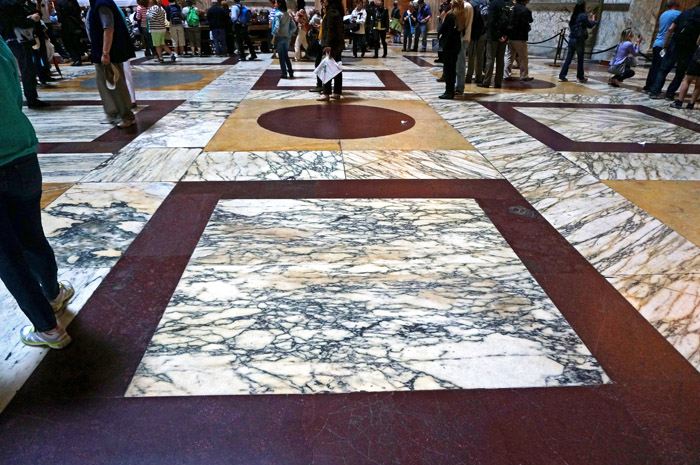
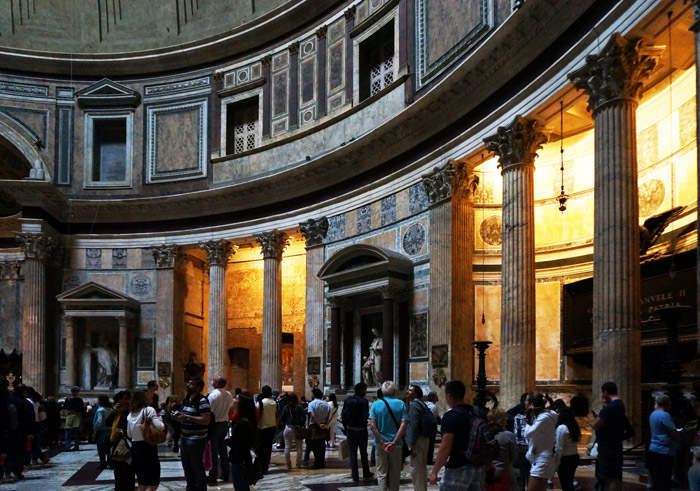
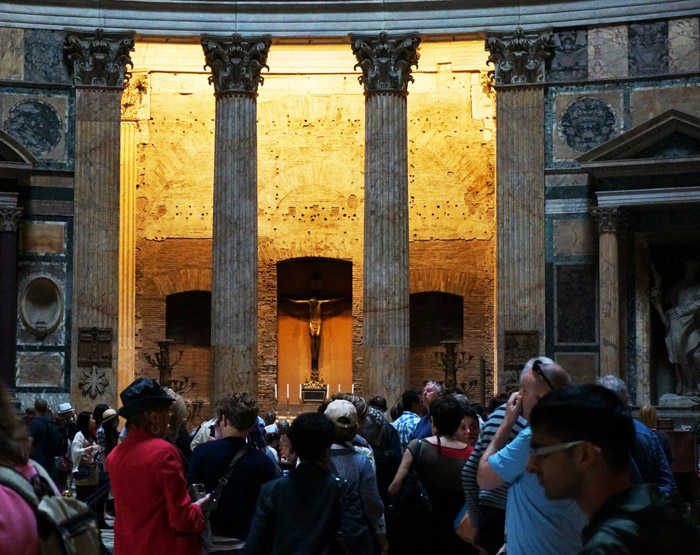
The Pantheon has been in continuous use since built. Pope Boniface IV, in 609, converted the Pantheon into a Christian church and named it "St. Mary of the Martyrs."
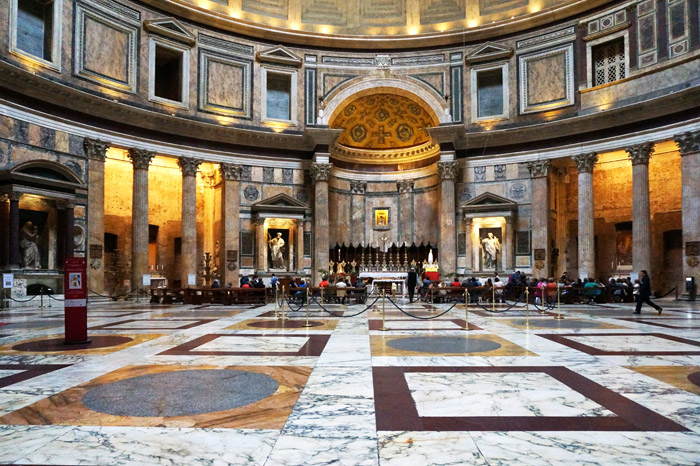
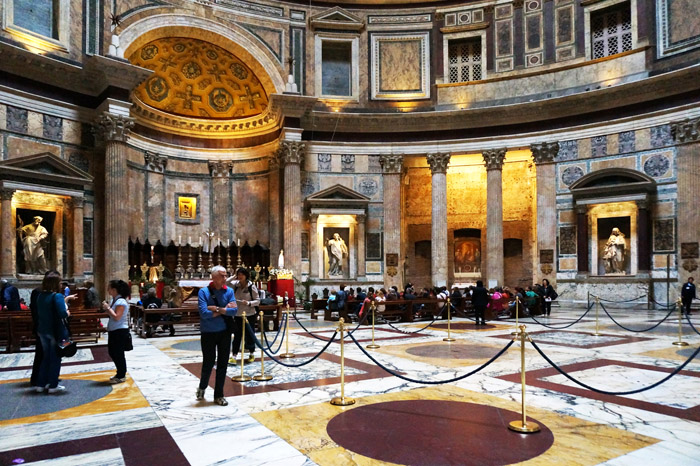
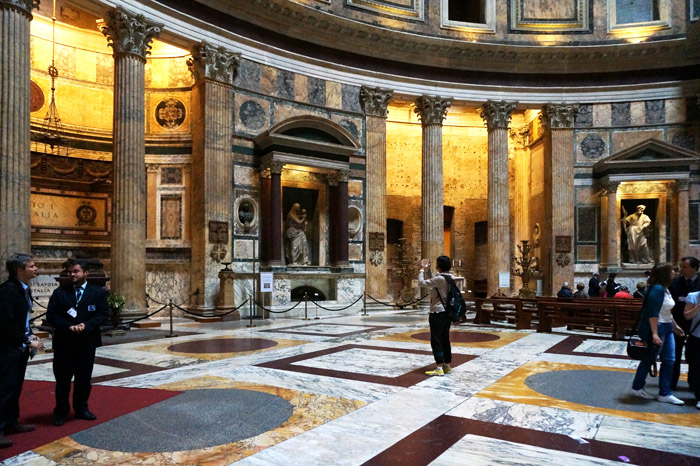
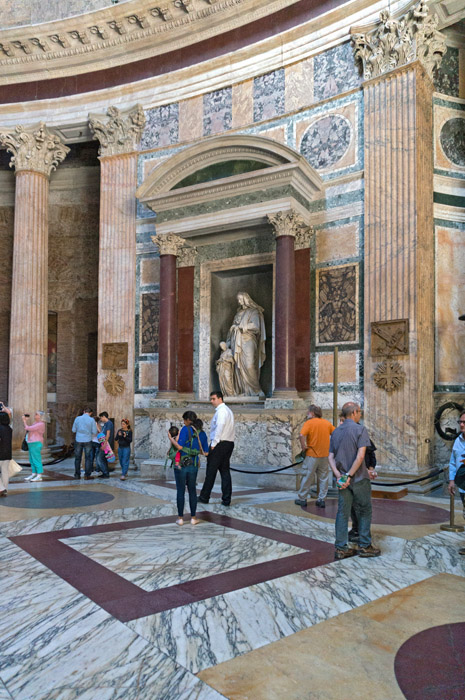
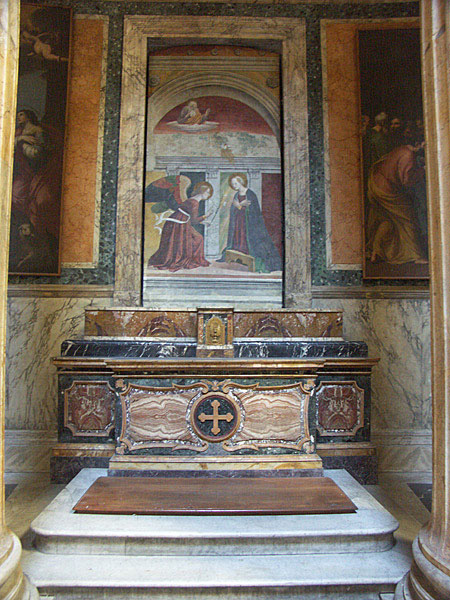
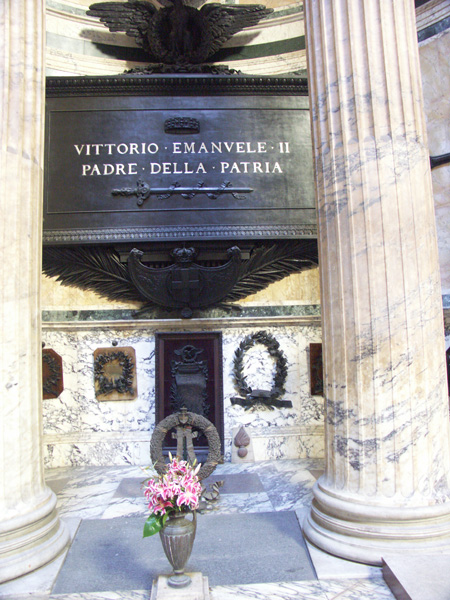
Entombed in the Pantheon are painters Raphael and Annibale Carracci, the composer Arcangelo Corelli, and the architect Baldassare Peruzzi. Also entombed there are two kings of Italy, Vittorio Emanuele II and Umberto I, along with Umberto's Queen, Margherita.
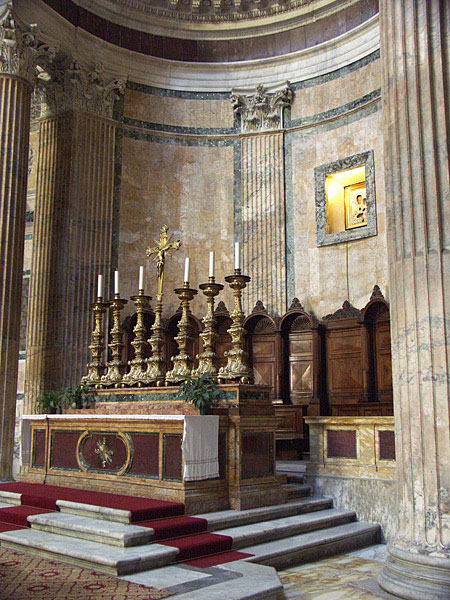
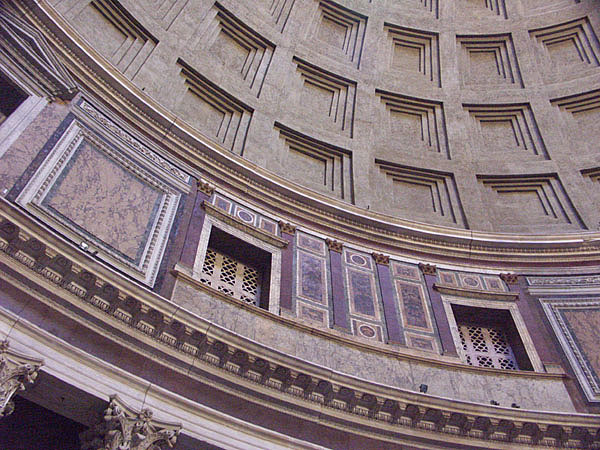
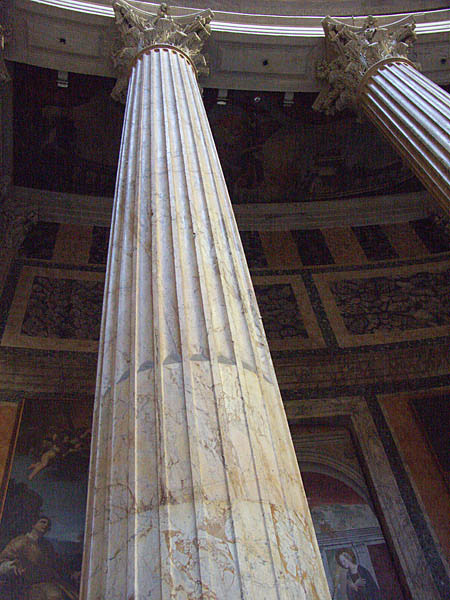
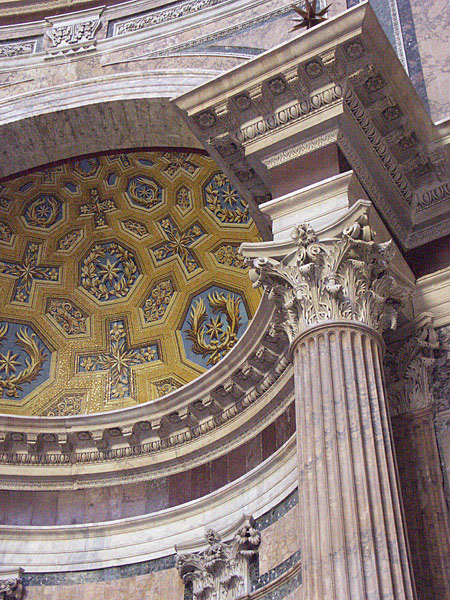
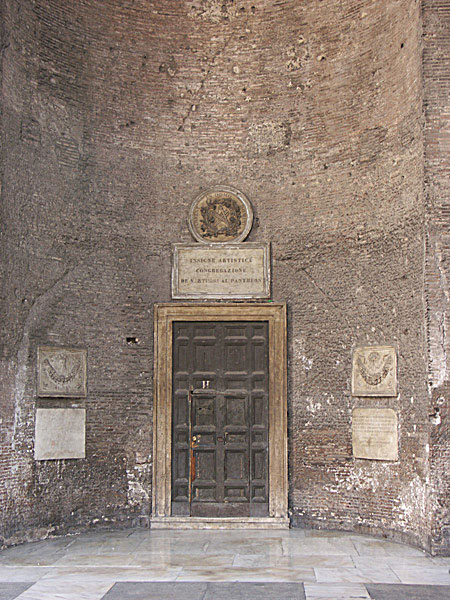
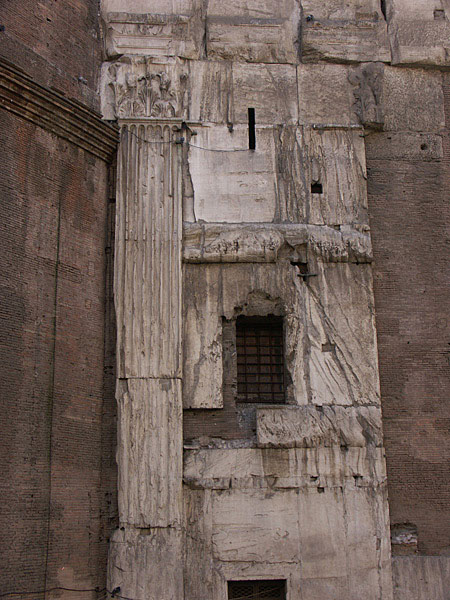
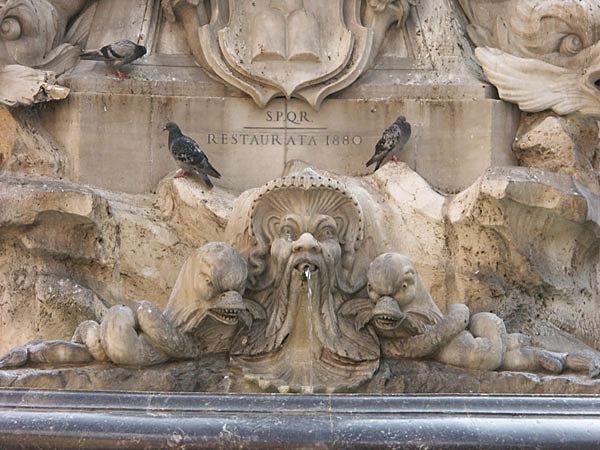
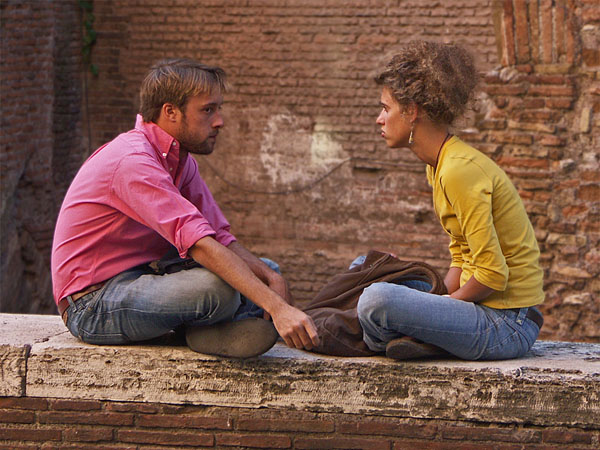
Pictures by Tom Aprille ( tomaprille@quartomese.com )